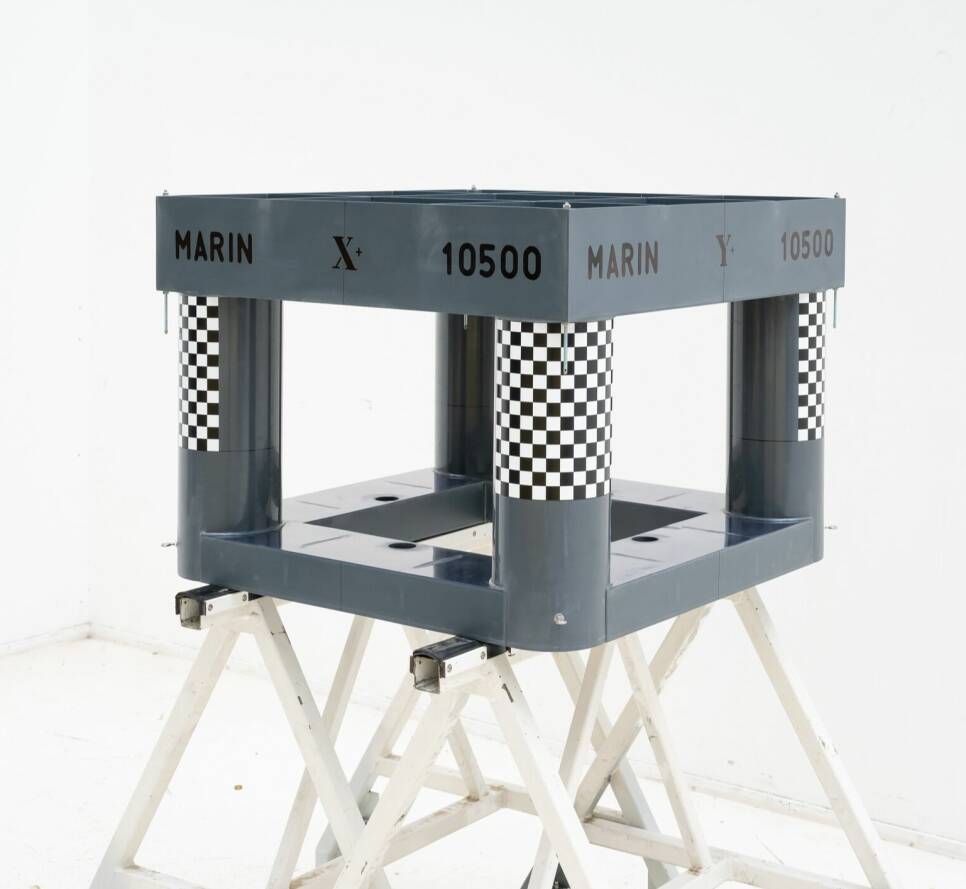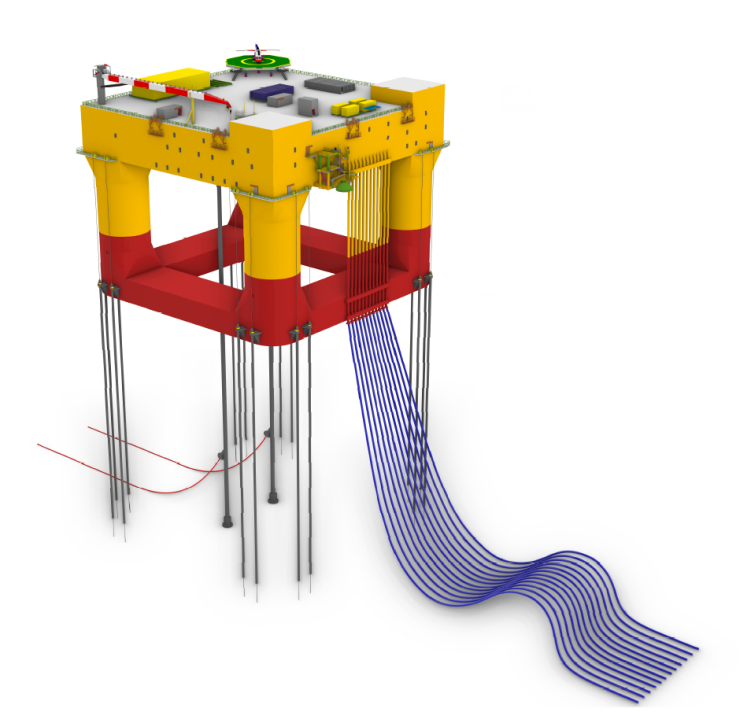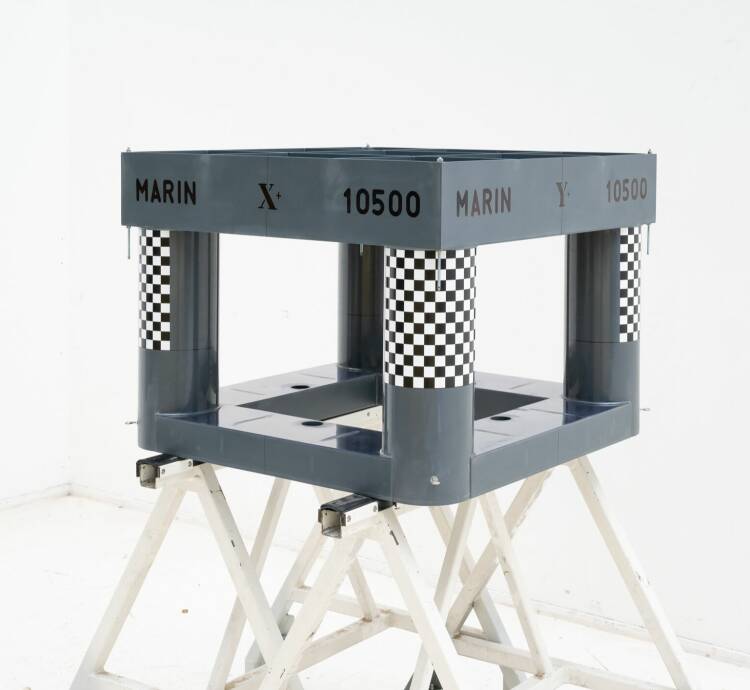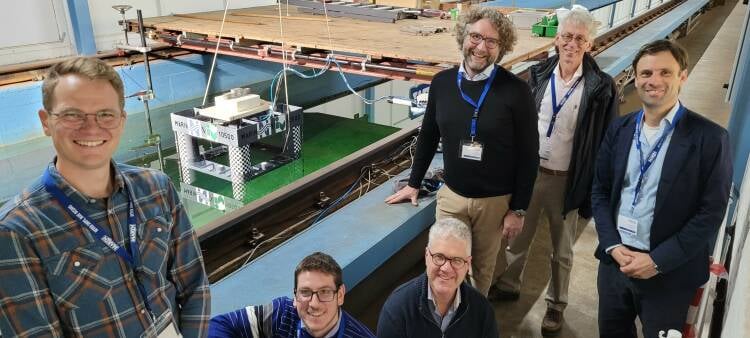March 2024, no. 139








Nevesbu: Floating offshore substation model test shows potential

Create a MARIN account to stay updated

Report
NEVESBU HVDC Substation concept model tests at MARIN
According to expectations, 1,800 gigawatts (GW) of offshore wind energy will be generated by 2050 worldwide, of which 250 GW will be produced by floating wind farms.
Suitable regions to generate floating offshore wind can be found in California and South East Asia, but also in Europe, where the main focus is on the Mediterranean, the North Sea, Bay of Biscay, Baltic Sea and the Aegean Sea. All of these areas have deep water and have suitable wind conditions for generating sustainable energy.
Render of TLP concept including deep water cable guide system.
Lennart Buitendijk,
Senior Naval Architect, Nevesbu

MARIN built the small scale TLP model from thin-walled PVC parts welded together, resulting in a model of only 25 kg, including all the instrumentation. The tendons and DC export cables were made of steel wires with proper stiffness and mass distribution to model the dynamic behaviour of the full configuration of the floater, tendons and DC export cables. We then measured the motions, accelerations and forces on all the tendons and export cables. Furthermore, we recorded a video of each test to assess wave run-up on the columns and possible deck impacts in extreme events.
In the end MARIN tested a selection of 10 different wave conditions with various configurations of the DC export cables. We focused on carefully executing the model test campaign and generating high quality video and measurement data. Nevesbu can now use these invaluable measurement results and time traces (sampled at 200 Hz from all the measurement signals), as well as the video to validate and tune its numerical model.
In 2023, MARIN awarded Nevesbu a free SME basin slot to test its HVDC substation concept. For MARIN it was quite unique to test a deepwater TLP in less than half of the usual basin time and at a fraction of the cost than is typical for such a project. Due to the size of the TLP we were able to test at a smaller scale of 1:100, which also enabled full geometrical scaling of the tendons (350 m water depth). This is important for the proper motion behaviour and set down of the TLP in waves.
Testing Nevesbu’s TLP substation
We tested the TLP substation in our Concept Basin, which is 220 m long, 4 m wide and has a depth of 3.6 m. This basin is fitted with a wave generator and a passive sinkable wave absorber to avoid reflections.
To efficiently transport 250 GW of renewable energy from sea to shore, offshore substations are required. These substations collect the wind energy (AC) from the farm, convert the electricity to high-voltage direct current (HVDC) or high-voltage alternating current (HVAC) and transport this through two or four export cables to shore. By doing so, the power losses during transport from the substation to shore are significantly reduced. These substations are already widely used in shallow waters, where the station is supported by a jacket or other bottom-founded solutions. Each substation is typically connected to 100 to 150 wind turbines, generating between 1.0 and 2.0 GW of power.
At water depths beyond 150 m, the costs of the renowned ‘bottom-founded’ solutions increase exponentially, making floating solutions an interesting alternative. It is expected that in water depths of up to 300 m, the substation might still be bottom-founded, while the turbines already utilise a floating solution. At wind farms with water depths beyond 300 m, a floating offshore substation (FOSS) will be required.
PVC scale model prior to testing.

Nevesbu floating substation test at MARIN.

The enthusiastic team during the TLP substation model tests in the Concept Basin.

To stimulate Dutch maritime innovation, MARIN invites Small and Medium Enterprises (MKB) to test their new ideas and concepts for free. The initiative aims at stimulating innovation in the Dutch maritime sector. The free basin slots allow feasibility checks and improvements in an early phase of a new concept development. Each year six projects are selected, see www.marin.nl/mkb for previous editions and projects.
Lennart Buitendijk

More info







Nevesbu floating substation test at MARIN.
MARIN built the small scale TLP model from thin-walled PVC parts welded together, resulting in a model of only 25 kg, including all the instrumentation. The tendons and DC export cables were made of steel wires with proper stiffness and mass distribution to model the dynamic behaviour of the full configuration of the floater, tendons and DC export cables. We then measured the motions, accelerations and forces on all the tendons and export cables. Furthermore, we recorded a video of each test to assess wave run-up on the columns and possible deck impacts in extreme events.
In the end MARIN tested a selection of 10 different wave conditions with various configurations of the DC export cables. We focused on carefully executing the model test campaign and generating high quality video and measurement data. Nevesbu can now use these invaluable measurement results and time traces (sampled at 200 Hz from all the measurement signals), as well as the video to validate and tune its numerical model.
Lennart Buitendijk

Render of TLP concept including deep water cable guide system.

In 2023, MARIN awarded Nevesbu a free SME basin slot to test its HVDC substation concept. For MARIN it was quite unique to test a deepwater TLP in less than half of the usual basin time and at a fraction of the cost than is typical for such a project. Due to the size of the TLP we were able to test at a smaller scale of 1:100, which also enabled full geometrical scaling of the tendons (350 m water depth). This is important for the proper motion behaviour and set down of the TLP in waves.
Testing Nevesbu’s TLP substation
We tested the TLP substation in our Concept Basin, which is 220 m long, 4 m wide and has a depth of 3.6 m. This basin is fitted with a wave generator and a passive sinkable wave absorber to avoid reflections.
PVC scale model prior to testing.

To stimulate Dutch maritime innovation, MARIN invites Small and Medium Enterprises (MKB) to test their new ideas and concepts for free. The initiative aims at stimulating innovation in the Dutch maritime sector. The free basin slots allow feasibility checks and improvements in an early phase of a new concept development. Each year six projects are selected, see www.marin.nl/mkb for previous editions and projects.

The enthusiastic team during the TLP substation model tests in the Concept Basin.
To efficiently transport 250 GW of renewable energy from sea to shore, offshore substations are required. These substations collect the wind energy (AC) from the farm, convert the electricity to high-voltage direct current (HVDC) or high-voltage alternating current (HVAC) and transport this through two or four export cables to shore. By doing so, the power losses during transport from the substation to shore are significantly reduced. These substations are already widely used in shallow waters, where the station is supported by a jacket or other bottom-founded solutions. Each substation is typically connected to 100 to 150 wind turbines, generating between 1.0 and 2.0 GW of power.
At water depths beyond 150 m, the costs of the renowned ‘bottom-founded’ solutions increase exponentially, making floating solutions an interesting alternative. It is expected that in water depths of up to 300 m, the substation might still be bottom-founded, while the turbines already utilise a floating solution. At wind farms with water depths beyond 300 m, a floating offshore substation (FOSS) will be required.
March 2024, no. 139
Create a MARIN account to stay updated

Nevesbu: Floating offshore substation model test shows potential


Lennart Buitendijk,
Senior Naval Architect, Nevesbu
Suitable regions to generate floating offshore wind can be found in California and South East Asia, but also in Europe, where the main focus is on the Mediterranean, the North Sea, Bay of Biscay, Baltic Sea and the Aegean Sea. All of these areas have deep water and have suitable wind conditions for generating sustainable energy.
According to expectations, 1,800 gigawatts (GW) of offshore wind energy will be generated by 2050 worldwide, of which 250 GW will be produced by floating wind farms.
NEVESBU HVDC Substation concept model tests at MARIN




Report





